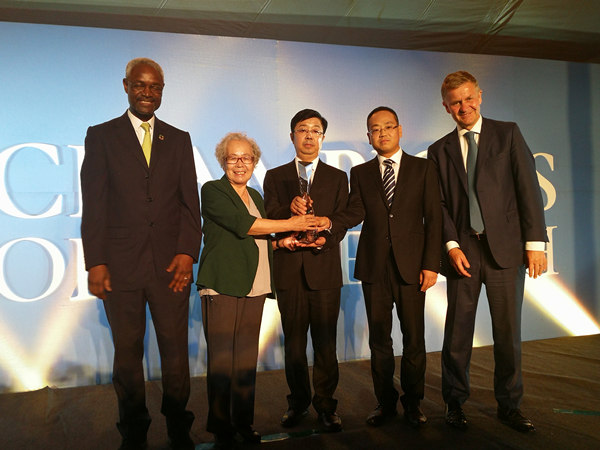

The market share of Chinese domestic mobile phone companies reached a new bottom recently as their foreign rivals such as Nokia and Samsung continued to release low-end products and aggressively expand their rural distribution networks.
According to the data tracking firm GFK, market share of Chinese cell phone vendors in the first quarter of this year dropped to a historical low of 26 percent, a great plunge from over 50 percent in 2003.
The combined market share of Nokia, Samsung and Motorola, the top three players in the country, surpassed 65 percent in the quarter, while the market share of the closet single domestic mobile phone vendor dropped to less than 5 percent, according to the research firm.
Pang Jun, a GFK analyst, attributes the drop to fiercer competition in the world's largest mobile phone market by subscribers.

"The Chinese cellphone market has changed a lot in recent years," he says. "Factors such as the foreign players are catering to rural consumers, there are also rampant counterfeits and fly-by-night manufacturers and the reluctance of the Chinese government to release 3G licenses have all made the business of domestic mobile phone makers much more difficult than ever before."
Chinese mobile phone manufacturers used to dominate the market in the earlier 2000s after Beijing released a licensing system in 1998 that required government permission to manufacture and sell handset.
However, their success did not last long as foreign companies revamped their strategies in 2004 by expanding into the rural markets and introducing even cheaper models that were affordable for average Chinese.
Ningbo Bird, a major domestic handset vendor, also saw its net loss in 2007 rise 1,865 percent to 593 million yuan. Amoi Electronics, another major Chinese mobile makers, posted a 36.4 revenue loss last year, with net losses at nearly six-fold to 844 million yuan.
Even mighty Lenovo could not avoid a sales decline in its mobile phone business. The largest domestic mobile phone seller surprised many in last February by announcing its decision to offload its cellphone business to a group of private equity firms, after seeing its handset revenue drop 11.5 percent to 108 million yuan in the third fiscal quarter ending in February.
David Tang, Nokia's vice-president, says too much emphasis on marketing and sales while neglecting product quality and R&D is the major reason for the downfall of some domestic players.
"The business model of some players in China is short-sighted because many of them are not willing to spend time and money to build their brands or improve their product qualities," Tang says. "Instead, their success relies heavily on provisioning the highest profit margins to their channel partners and marketing their products through exaggerated advertising."
According to Tang, Nokia's net sales from China reached 1.741 million euro, an increase of 22 percent year on year. Its shipments grew 38.6 percent to 70.7 million, with lower-end phones priced between 300 yuan to 1,000 yuan counting for the bulk.
That has made China Nokia's largest mobile phone market, accounting for 16 percent of its global sales.
Pang from GFK said that Nokia's success relies heavily on its revamped distribution strategy, which has changed from focusing on building partnerships with national distributors to seeking alliances with smaller provincial players.
"Nokia has shifted its strategic focus from big cites to rural areas, which has a great impact to the domestic players," he says.
According to government figures, mobile phone users in China reached 547 million by the end of last year.
Although the number has helped China to become the world's largest mobile phone market by subscribers, the mobile penetration rate in the country is still somewhere between 40 to 50 percent, comparing with over 80 percent in the United States.
Such a huge gap has made enough room for both foreign and domestic companies to make changes.
"Domestic mobile phone makers should rely on their better understanding of local needs and be more flexible to respond more quickly to the market changes," Pang says.
"In the future, I think they should focus on one or two market segments to fight off their foreign rivals."
(China Daily 05/26/2008 page7)













